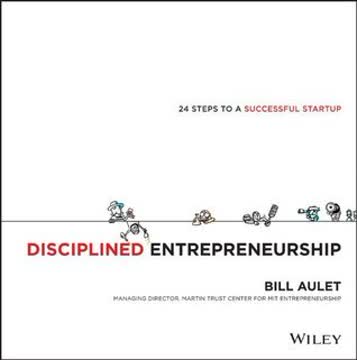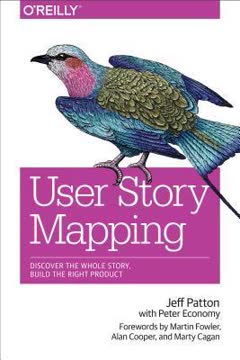Key Takeaways
1. Define your target customer and identify underserved needs
Customers don't care about your solution. They care about their problems.
Understanding your target market is crucial for product success. Start by creating detailed personas that capture demographic, psychographic, and behavioral attributes of your ideal customers. Use techniques like interviews, surveys, and market segmentation to gain deep insights into their needs, pain points, and preferences.
Identify underserved needs by analyzing the importance versus satisfaction of various customer needs. Look for opportunities in the upper left quadrant of this framework, where needs are highly important but have low satisfaction with current solutions. Use tools like the Kano model to categorize needs as must-haves, performance benefits, or delighters. This approach helps prioritize which needs to address and where to innovate.
2. Create a compelling value proposition that differentiates your product
Strategy means saying "no" to 1,000 things.
Articulate your unique value by defining how your product will meet customer needs better than existing alternatives. Use the Product-Market Fit Pyramid to align your target customer, underserved needs, value proposition, feature set, and user experience.
Develop a clear product value proposition template that outlines:
- Must-have features
- Performance benefits where you'll outperform competitors
- Unique delighters that set you apart
Remember to consider future market trends and competitor moves when crafting your strategy. A strong value proposition focuses on solving key customer problems while differentiating from the competition.
3. Specify your Minimum Viable Product (MVP) feature set
The more user effort required to take an action, the lower the percentage of users who will take that action.
Prioritize features ruthlessly to define your MVP. Start by brainstorming features that address each benefit in your value proposition. Then, break these down into smaller "feature chunks" and prioritize based on customer value and development effort.
Use techniques like story point estimation and ROI analysis to select the minimum set of features that will resonate with target customers. Focus on including:
- All identified must-haves
- Key performance benefits that differentiate you
- At least one unique delighter
Remember that your MVP is a starting point for learning, not a fully-featured product. Be prepared to iterate based on customer feedback.
4. Design an intuitive user experience (UX) for your product
UX is in the eye of the beholder.
Create a great user experience by focusing on both usability and delight. Apply the UX Design Iceberg model, which includes:
- Conceptual design: The core concept underlying your product
- Information architecture: How information and functionality are structured
- Interaction design: How users and your product interact
- Visual design: The aesthetic elements of your product
Use design principles like visual hierarchy, Gestalt principles, and responsive design to create intuitive interfaces. Remember that copy is also a crucial part of UX. Test your designs with users throughout the process to ensure they resonate with your target audience.
5. Test your MVP with customers and iterate based on feedback
A sample size of zero is okay.
Conduct qualitative user testing to validate your MVP and improve product-market fit. Use techniques like in-person moderated testing, remote testing, and unmoderated testing to gather feedback. Aim for 5-8 customers per testing wave, and focus on both usability and perceived value.
Structure your user tests with:
- Warm-up and discovery questions
- Tasks for users to complete
- Follow-up questions to probe deeper
Track key results across multiple waves of testing, distinguishing between feedback on functionality, UX, and messaging. Use this feedback to iterate on your product, making improvements until you achieve strong product-market fit.
6. Use Agile development to build your product efficiently
Smaller batch sizes are better.
Implement Agile methodologies like Scrum or Kanban to build your product iteratively and efficiently. Agile development allows for faster delivery, earlier customer feedback, and more accurate scope estimation compared to traditional waterfall approaches.
Key Agile practices include:
- Working in short sprints or iterations
- Maintaining a prioritized product backlog
- Daily stand-up meetings for team communication
- Regular retrospectives to improve processes
Ensure strong cross-functional collaboration between product managers, designers, developers, and QA testers. Stay ahead of developers by having user stories and designs ready in advance, and break stories down into smaller, manageable chunks.
7. Measure key metrics and optimize your product using analytics
You can't manage what you don't measure.
Define and track key metrics using frameworks like Dave McClure's "AARRR" (Acquisition, Activation, Retention, Revenue, Referral). Focus on retention rate as the ultimate measure of product-market fit, using cohort analysis to track improvements over time.
Develop the "equation of your business" to break down high-level metrics into actionable components. Use the Lean Product Analytics Process to systematically improve your metrics:
- Define key metrics
- Measure baseline values
- Evaluate upside potential
- Select top metric for improvement
- Brainstorm improvement ideas
- Implement and test top idea
- Iterate and repeat
Leverage A/B testing to experiment rapidly and avoid getting stuck at local maximums. Continuously optimize your product and business by focusing on the metrics that matter most at each stage of your growth.
</instructions>
Last updated:
FAQ
What's The Lean Product Playbook about?
- Focus on Product Success: The Lean Product Playbook by Dan Olsen provides a framework for achieving product-market fit using Lean Startup principles.
- Lean Product Process: It outlines a six-step process to guide teams from identifying target customers to testing their minimum viable product (MVP) with real users.
- Real-World Examples: The book includes case studies, such as Quicken and TurboTax, to illustrate successful product development and refinement.
Why should I read The Lean Product Playbook?
- Practical Guidance: Offers actionable steps and frameworks for immediate application in product development.
- Avoid Common Pitfalls: Helps readers understand why products fail and how to avoid these mistakes.
- Comprehensive Resource: Serves as a reference for Lean Startup concepts, user experience design, and product analytics.
What are the key takeaways of The Lean Product Playbook?
- Product-Market Fit Pyramid: Breaks down product-market fit into five components: target customer, underserved needs, value proposition, feature set, and user experience.
- Iterative Process: Emphasizes iterating based on customer feedback to refine products continuously.
- Focus on MVP: Encourages building only what is necessary to test hypotheses and validate ideas.
What is the Lean Product Process in The Lean Product Playbook?
- Six Steps: Determine target customers, identify underserved needs, define value proposition, specify MVP feature set, create MVP prototype, and test MVP with customers.
- Hypothesis-Driven: Involves forming and testing hypotheses about customers and their needs.
- Iterative Learning: Encourages learning from each iteration to make data-driven adjustments.
How does The Lean Product Playbook define product-market fit?
- Definition: Achieving product-market fit means creating a product that meets real customer needs better than alternatives.
- Critical for Success: Without product-market fit, products are unlikely to gain traction or achieve sustainable growth.
- Framework for Success: The Product-Market Fit Pyramid provides a structured approach to achieving this fit.
How do I determine my target customer according to The Lean Product Playbook?
- Segmentation Techniques: Use demographic, psychographic, behavioral, and needs-based segmentation.
- User vs. Buyer: Distinguish between users and buyers, especially in B2B contexts.
- Personas: Create personas based on target customer attributes to align product development with audience needs.
What are underserved customer needs, and how do I identify them in The Lean Product Playbook?
- Definition: Needs not adequately met by existing solutions, representing opportunities for new products.
- Customer Discovery Interviews: Conduct interviews to uncover pain points and desires.
- Importance vs. Satisfaction Framework: Prioritize needs based on their importance and current satisfaction levels.
What is a value proposition, and how do I define mine according to The Lean Product Playbook?
- Core Definition: Articulates the specific customer needs your product will address and how it is better than alternatives.
- Kano Model: Classify customer needs into must-haves, performance benefits, and delighters.
- Strategic Focus: Helps prioritize features and avoid scope creep.
How do I specify my MVP feature set in The Lean Product Playbook?
- Feature Chunking: Break down feature ideas into smaller, manageable chunks.
- Prioritization: Use ROI to prioritize features based on expected customer value and effort required.
- Iterative Selection: Select top features that align with your MVP candidate, including must-haves and key benefits.
What are the best practices for testing my MVP with customers according to The Lean Product Playbook?
- Qualitative Testing: Conduct one-on-one user tests to gather in-depth feedback on usability and satisfaction.
- Sample Size: Test with five to eight customers per wave to identify patterns and major issues.
- Iterative Feedback: Use insights to iterate on your product, refining features and addressing pain points.
What is the hypothesize-design-test-learn loop in The Lean Product Playbook?
- Iterative Learning: Encourages teams to formulate hypotheses, design experiments, test with users, and learn from results.
- Continuous Improvement: Allows teams to refine products based on real customer feedback.
- Structured Approach: Systematically validates assumptions and makes data-driven decisions.
How does The Lean Product Playbook suggest measuring key metrics after launch?
- Analytics Framework: Set up a framework to track metrics like acquisition, conversion, retention, and revenue.
- Cohort Analysis: Measure retention rates over time to see how different user groups engage with the product.
- A/B Testing: Compare different versions of a product or feature to make informed decisions about changes.
Review Summary
The Lean Product Playbook receives high praise for its practical approach to product management. Readers appreciate its comprehensive coverage of the product development process, from problem identification to market fit. Many find it valuable for both beginners and experienced professionals, highlighting its clear explanations and actionable advice. The book's focus on customer-centric design and lean methodologies is particularly well-received. Some reviewers note that while it synthesizes concepts from other lean books, it offers unique insights and real-world examples. Overall, it's considered an essential read for product managers and entrepreneurs.
Similar Books










Download PDF
Download EPUB
.epub digital book format is ideal for reading ebooks on phones, tablets, and e-readers.




